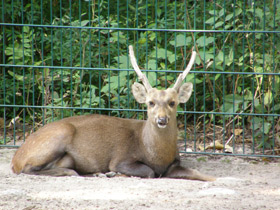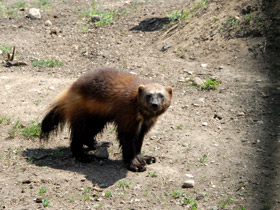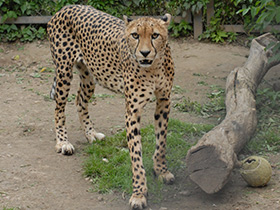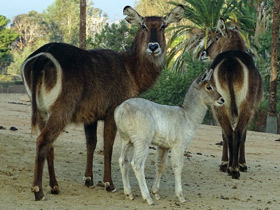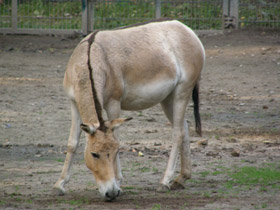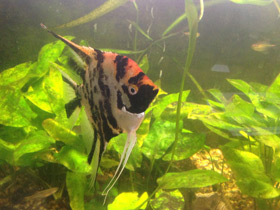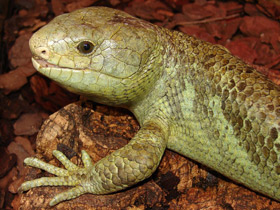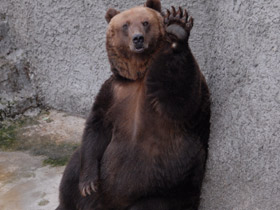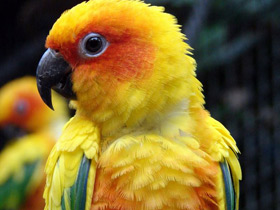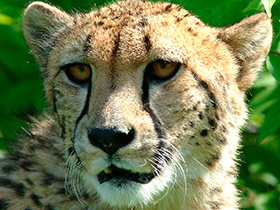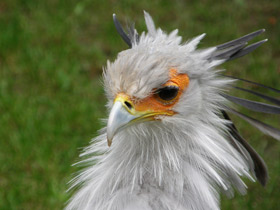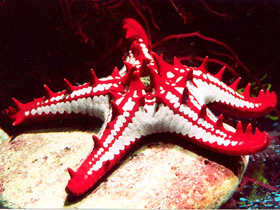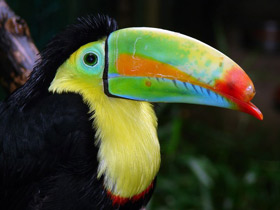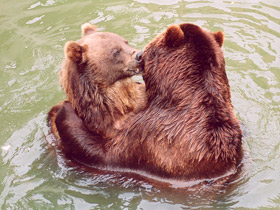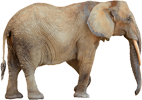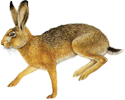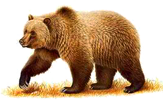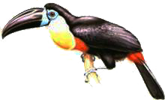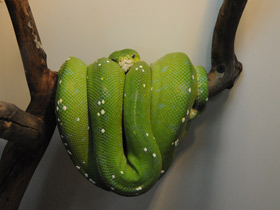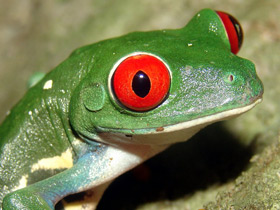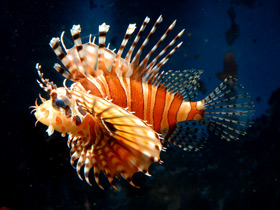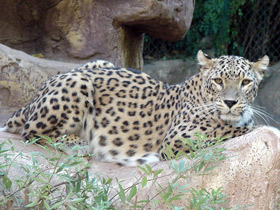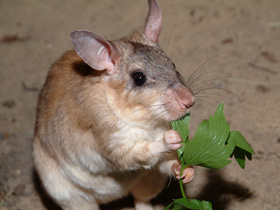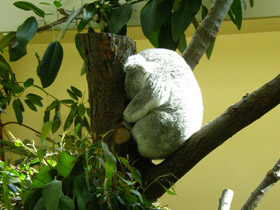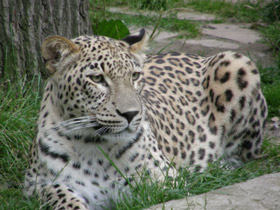The Indian hog deer (Axis porcinus)
The Indian hog deer is found throughout Southern and Southeast Asia, including Pakistan, India, Indochina, Nepal, Bangladesh, and Thailand. Hog deer were introduced to Australia, the USA, and Sri Lanka. The hog deer prefer swampy savannahs with dense scrubs and elephant grass. They forage in the night time resting in the thickets during the day. When threatened, the hog deer run with a trotting gait which makes them resemble hogs and this fact accounts for their common name. A mature hog deer stag stands about 70 cm at the shoulder and weighs up to 50 kilograms. The body length of this deer is about 110 cm. Its appearance is similar to that of the axis deer, but the hog deer is stockier, has shorter legs and more compact body. The males are solitary while females with calves sometimes form small groups. During the breeding season, males are extremely aggressive. Gestation lasts 220 to 235 days and results in the birth of one fawn (twins are known but uncommon). Like many other deer babies, the hog deer fawns have spots on their coat that fade by the age of six months.









